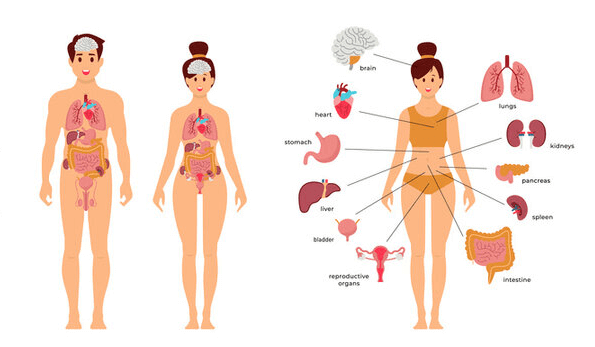Female:Ef49g__U7yw= Human Anatomy

The study of Female:Ef49g__U7yw= Human Anatomy reveals a multifaceted system that underpins not only reproductive health but also broader aspects of well-being. Central to this anatomy are the reproductive organs, including the ovaries and uterus, which are intricately linked to hormonal regulation and physiological processes. Additionally, the unique skeletal and muscular characteristics necessitate a nuanced understanding of fitness and health management tailored specifically for women. As we explore these elements further, intriguing questions arise about the implications for health practices and the societal perceptions that shape our understanding of women’s bodies.
Overview of Female Anatomy
The female anatomy is a complex and intricate system that plays a crucial role in reproduction, hormonal regulation, and overall health.
Key components include the female genitalia, which facilitate reproductive functions, the pelvic structure that supports internal organs, and the urinary system, essential for waste elimination.
Additionally, breast anatomy contributes to lactation and has implications for health monitoring and disease prevention.
Reproductive System Features
An intricate interplay of structures characterizes the female reproductive system, which includes the ovaries, fallopian tubes, uterus, and vagina.
Central to this system is ovarian function, which regulates the menstrual cycle through the release of eggs and hormones.
This cyclical process not only facilitates reproduction but also influences overall health, highlighting the importance of understanding these features for personal well-being and autonomy.
Hormonal Regulation and Health
How do hormonal fluctuations impact overall health?
Hormonal balance is crucial for maintaining optimal endocrine health, affecting mood, energy levels, and metabolic functions.
Disruptions in hormonal levels can lead to various health issues, including anxiety, weight gain, and reproductive disorders.
Understanding these fluctuations empowers individuals to take proactive steps toward achieving hormonal equilibrium, ultimately enhancing overall well-being and quality of life.
Read Also Egypt:Aofix0wcjs8= Pharo
Skeletal and Muscular Differences
Hormonal fluctuations can also influence skeletal and muscular characteristics, leading to variations in strength, bone density, and overall physical performance among individuals.
Women typically have lower muscle mass and bone density than men, which can affect their physical capabilities and vulnerability to injuries.
Understanding these differences is crucial for developing tailored fitness programs and promoting optimal health across various demographics.
Conclusion
Female:Ef49g__U7yw= Human Anatomy characterized by its intricate reproductive system and hormonal regulation, is essential for overall health. Notably, approximately 50% of women experience significant menstrual discomfort, highlighting the importance of understanding and addressing these physiological processes. Furthermore, the skeletal and muscular differences necessitate tailored fitness approaches to enhance well-being. A comprehensive understanding of female anatomy empowers individuals to navigate health challenges effectively and promotes a proactive attitude towards reproductive health and overall wellness.



